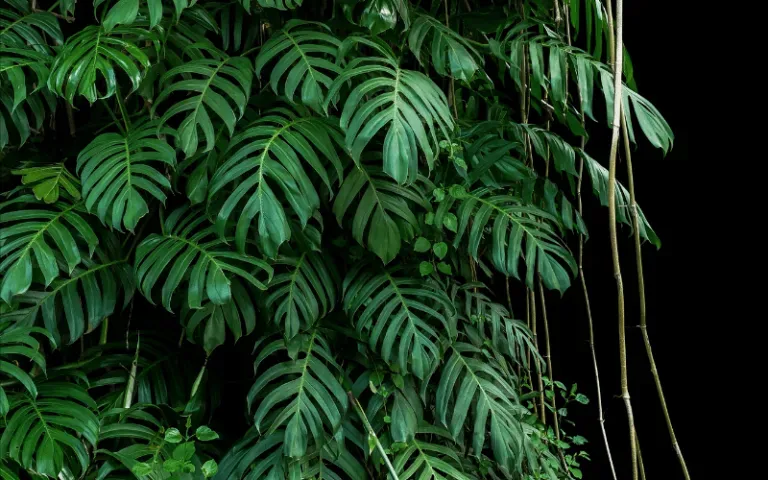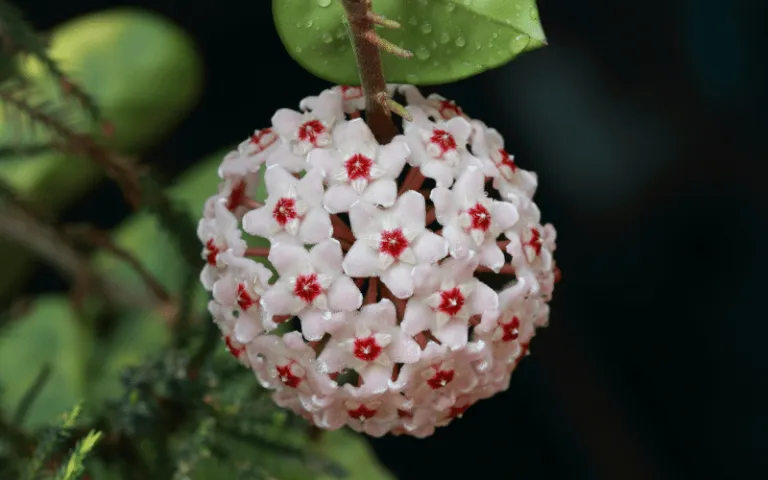The promise of new flavours beckons from Banawe.
8 Native Philippine Plants to Brighten Your Space

Never in my pre-pandemic life did I imagine myself spending on plants. But now, I’ve purchased a fair number of my own — and I have no regrets! They’ve definitely brightened my space, eased my Zoom fatigue, and helped me cope with cabin fever. Now, I get it: Some plants are truly worth spending for.
If you’ve become a plant enthusiast yourself, you’ve probably also been tempted by some of the trendy houseplants: the Monstera deliciosa, Rubber Fig tree, and Fiddle-Leaf Fig, to name a few. Unfortunately, these plants usually come with a hefty price tag, which then puts too much unnecessary pressure on us plant parents. Don’t you agree?
Also read: 11 Beginner Plant Care Tips + Life Lessons & Hugot That Come With Them
Learning about native Philippine plants

I turned towards houseplants for their therapeutic benefits, so I decided early on not to stress over this hobby. With that, I decided to explore native Philippine plants as houseplants. To me, it just made sense: Generally, these plants would be more affordable and accessible; they would be easier to care for, because they wouldn’t have to adapt to a foreign environment.
Also read: Plant Parenthood: 8 Signs You Should Get a Quarantine Houseplant
Ruth Carino, a plant enthusiast from Crazy Plant Lady PH, shares that she has been enjoying taking care of native plants, too. “The practical side is, of course, (the plants are) low maintenance. But on the bigger scheme of things, having native plants better supports our ecosystem, too. For instance, wasps are very specific to the types of fig — even our birds don’t thrive in certain exotic trees,” Ruth tells us.
So, there’s that: Native Philippine plants are beautiful, relatively affordable, and they easily thrive in our local conditions. To get you started, here are some of the local plants you might enjoy as your own.
Note: There are numerous things to consider when adopting plants — native, endemic, or not. Nowadays, the most pressing issue is the prevalence of plant poaching. If you intend to buy your own plants, make sure they aren’t in this list of endangered plant species.
8 indoor native plants in the Philippines
1. Tibatib (Epipremnum pinnatum)
View this post on Instagram
A known cheaper alternative for the Monstera deliciosa (Swiss cheese plant), the Epipremnum pinnatum (also known as tibatib) has equally fascinating fenestrations minus the outrageous price. (Nowadays, a Monstera deliciosa plant sells for at least ₱1,000 on average!)
Tibatib is sometimes called the “Monstera of the Philippines,” but only because of how it looks. This endemic plant belongs to a different species altogether, although it grows just as fast as the former. Its leaves have the potential to grow huge too, especially when you let them climb.
Great for indoors, the tibatib is known to tolerate drought and low-light conditions. That said, the plant will effortlessly thrive when you place it in a spot with bright, indirect sunlight.
2. Bitaog (Calophyllum inophyllum)
View this post on Instagram
Aside from the Monstera deliciosa, the Ficus elastica (rubber fig tree) has also gained traction last year. A good alternative to this is the bitaog, with its leathery foliage that gives off that statement shine we all love.
Like the rubber fig tree, the bitaog also grows metres high. But as a juvenile, the plant makes a great indoor ornament for tighter spaces! Make sure to give it adequate sun time and well-draining soil mixture, and you will find it thriving in no time.
3. Kapal-kapal (Calotropis gigantea)
View this post on Instagram
The fiddle-leaf fig (Ficus lyrata) has been a trendy houseplant for years now, and it seems to be enjoying the spotlight (no pun intended). In fact, now, you will find various stores selling this species for hundreds to thousands of pesos! And because the fiddle-leaf fig is notorious for being quite finicky, it isn’t really an advisable purchase for newbie plant parents.
Thankfully, there are a lot of endemic plants in the Philippines that mimic the look of the fiddle-leaf fig. Crazy Plant Lady PH suggests the Calotropis gigantea, also known as kapal-kapal. You might have seen this around your neighbourhood (I know I have!) — like most Philippine native plants, this one just naturally thrives in our tropical conditions.
4. Hoya cumingiana
View this post on Instagram
If you haven’t hopped on the Hoya trend yet, what are you waiting for? Home to over a hundred species of Hoya, the Philippines is considered as the centre of diversity for this genus. That said, a Hoya would be a good choice for beginner plant parents.
One of the endemic Hoya plants in the Philippines is the Hoya cumingiana, which Ruth particularly finds stunning. These are relatively easy to grow and propagate; aside from their remarkable scallop leaves, they produce beautiful flowers as well!
5. Mali-mali (Leea guineensis)
View this post on Instagram
An online store that sells native Philippine trees, Philippine Native Trees has a notable selection of plants that mostly thrive abundantly outdoors. “Our native trees stand out and grow to their full potential on the ground.”
That said, Philippine Native Trees does sell potted seedlings that can also work beautifully indoors for a few years. One of the plants that are popular for their ornamental feature is the Leea guineensis, which is sometimes called mali-mali. Although a perennial plant, the mali-mali can stay up to eight years potted indoors.
Aside from its vibrant flowers (which, unfortunately, rarely blooms indoors), the mali-mali is also known for its leaves that are used to treat rheumatism, vertigo, colic, and arthritis.
6. Philippine ebony (Diospyros ferrea)
View this post on Instagram
Another native tree available in Philippine Native Trees is the Philippine ebony, which is sometimes called bantolinao. An indigenous plant, the Philippine ebony can thrive indoors as it is slow-growing and tolerates shade.
Because of its eye-catching foliage, the bantolinao makes a popular bonsai plant in the Philippines. But when it is allowed to grow, it towers up to 30 metres high, boasting an elegant black ebony trunk.
7. Katmon (Dillenia philippinensis)
View this post on Instagram
Another native plant, the katmon produces saccharine fruit and graceful white blooms. Because of its notable leaves and flowers, this evergreen has long been used as an accent tree by Filipino garden enthusiasts.
When fully grown, the katmon can tower up to 15 metres high. As a seedling, it can properly thrive indoors as it is shade-tolerant.
8. Botong (Barringtonia asiatica)
View this post on Instagram
From glossy foliage to striking flowers, the botong has serious ornamental potential! If you have a South-facing window (i.e. your place gets a lot of direct sunlight), consider amping up your space with a botong seedling.
As a native plant, the botong is very resilient — even in harsh tropical conditions. Ruth shares this particular plant, along with her potted bitaog, “survived Ulysses with flying colours” when the recent typhoon hit her home in Aurora!
Also read: Thinking of Taking up Gardening? Let These 20-Somethings Show You How!
While more Filipinos are embracing the plant parenthood lives, many native Philippine plants surprisingly remain underrated. There are several other native plants out there; we’d love to hear about your favourites! Tag us on Instagram when you post photos of your plant babies!
Published at
About Author
Danielle Uy
Subscribe our Newsletter
Get our weekly tips and travel news!
Recommended Articles
10 Best Banawe Restaurants for a Mouthwatering Food Trip in QC 10 Commandments for Responsible Travel Flexing Spread the good word!
10 Long Weekends in the Philippines in 2023 Book those flights ASAP.
10 Tips for Planning Out-of-Town Trips During Typhoon Season Stay safe and travel well during the rainy season.
12 Most Colourful Natural Attractions Around The World! It’s time to cross over the rainbow!
Latest Articles
Anko Philippines Store Opens Today – See What’s in Store at Glorietta 2 This holiday season, give your home an upgrade!
LRT-1 Cavite Extension Launches: Five New Stations Open November 16 Get ready for quicker commutes!
China Expands Visa-Free Access: 9 New Countries Added for 2025 Check if your country’s on the list and start planning!
Your Guide to Boyz II Men’s Manila Concert: Tickets, Venue, and More! Get ready for a night of timeless hits!
The U.S. Airlines' New Refund Policy: Everything Travellers Need to Know Talk about hassle free!

